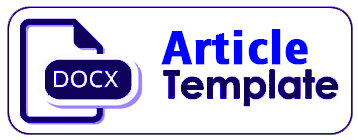Design of an e-Invoice System Production Information at Haruki Nihongo Gakkou Training Institute Klaten based on Open Source Enterprise Resource Planning Using Odoo Version 16
DOI:
https://doi.org/10.32497/ab.v25i1.5675Keywords:
Odoo, ERP, E-Invoice, Point of Sales, Business Process Improvement, Educational Technology, LPK Haruki Nihongo GakkouAbstract
LPK Haruki Nihongo Gakkou, a Japanese-based training institute, faced challenges with inefficient business processes and a cumbersome invoicing system. This paper presents a case study on how they successfully implemented an Odoo-based Enterprise Resource Planning (ERP) system with a Point of Sales (POS) module to address these issues and create a streamlined, integrated E-Invoice system. The paper emphasizes the need for a digital solution to simplify the school's business flow and improve operational efficiency. It details the selection process for the Odoo-based ERP system, highlighting how the system was customized to meet the specific needs of LPK Haruki Nihongo Gakkou identified through interviews and instructions. The implemented system underwent rigorous testing and evaluation by the school, ensuring its effectiveness and user-friendliness. The results showcase the significant improvements achieved through the new system. The paper discusses the positive impact on operational efficiency, streamlined business processes, and simplified invoicing procedures. Additionally, it underlines the enhanced system integration, allowing for seamless data flow across various departments. This case study demonstrates the successful implementation of an Odoo-based ERP system for E-Invoicing in the educational sector. It provides valuable insights for other organizations seeking to improve their business processes and achieve greater operational efficiency through digital integration.References
Ahmadiyah, A. S., Ratna, Y. Y., Yotifa, N. N., & Dinillah, I. (2021). Supplementary quality control features for the production department in Odoo ERP. IOP Conference Series: Materials Science and Engineering, 1072(1). doi:10.1088/1757-899x/1072/1/012055
Chang, W. T., Yeh, Y. P., Wu, H. Y., Lin, Y. F., Dinh, T. S., & Lian, I. B. (2020). An automated alarm system for food safety by using electronic invoices. PLoS One, 15(1), e0228035. doi:10.1371/journal.pone.0228035
Domagała, A., Grobler-Dębska, K., Wąs, J., & Kucharska, E. (2021). Post-Implementation ERP Software Development: Upgrade or Reimplementation. Applied Sciences, 11(11). doi:10.3390/app11114937
Gantira Mira, I., Lubis, M., Puspitasari, W., & Ridho Lubis, A. (2020). ERP system implementation with accounting modules in national amil zakat institutions. IOP Conference Series: Materials Science and Engineering, 801(1). doi:10.1088/1757-899x/801/1/012117
Gao, x., Qiu, t., & Gu, y. (2020). The power system in ERP environment about analyze and deal the problem of the project planning. IOP Conference Series: Earth and Environmental Science,
(1). doi:10.1088/1755-1315/526/1/012103
Hozairi, Buhari, Lumaksono, H., & Tukan, M. (2019). Development of Enterprise Resource Planning (ERP) for the Indonesian marine security agency. IOP Conference Series: Earth and Environmental Science, 339(1). doi:10.1088/1755-1315/339/1/012044
Rahayu, S. A. d. G. H. N. N. (2019). Implementasi Sistem Enterprise Resource Planning Berbasis Odoo Modul Sales Dengan Metode RAD Pada PT XYZ. Journal Industrial Services, 5(1), 51. Supriatna, A. D. (2018). Designing library information system using rapid application development method. IOP Conference Series: Materials Science and Engineering, 434. doi:10.1088/1757-899x/434/1/012259
Xie, R., Mao, W., & Shi, G. (2019). Electronic Invoice Authenticity Verifying Scheme Based on Signature Recognition. Journal of Physics: Conference Series, 1213(3). doi:10.1088/1742- 6596/1213/3/032019
Downloads
Published
Issue
Section
License
The copyright of the received article shall be assigned to the journal as the publisher of the journal. The intended copyright includes the right to publish the article in various forms (including reprints). The journal maintains the publishing rights to the published articles.

This work is licensed under a Creative Commons Attribution 4.0 International License.





